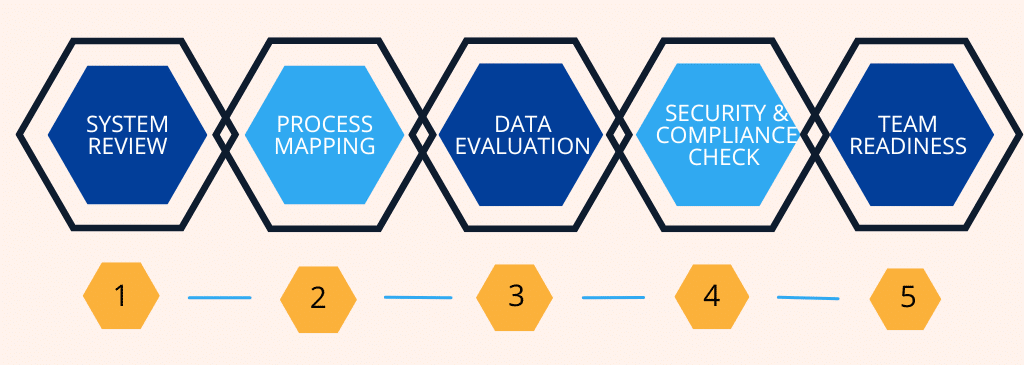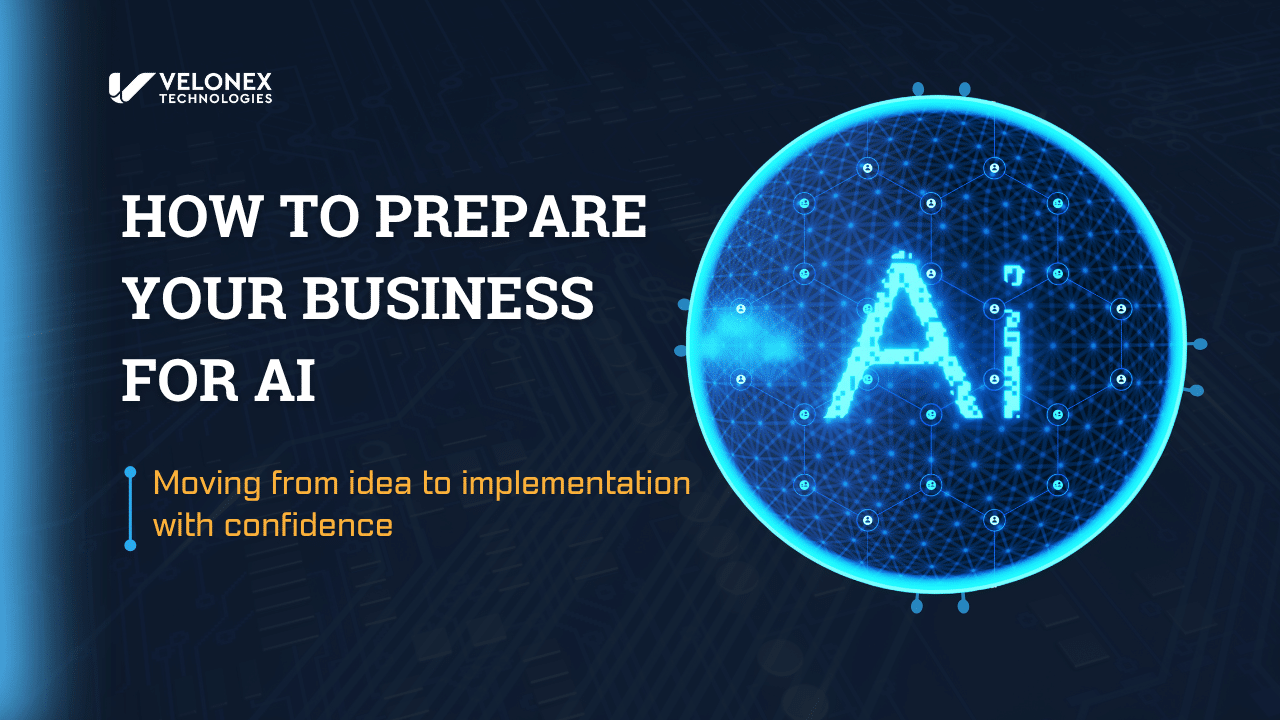You hear about businesses that adopted AI and have seen big results, faster workflows, better decision-making, fewer errors. Maybe they’ve automated customer support, cleaned up their data, or used AI to generate reports in seconds instead of hours. It sounds like something that could really help your team, too. But you don’t know where to begin.
Here’s a Step-by-Step Guide to Help You Start with AI
Step 1. Assess Readiness
The first step is taking a step back to assess where you are today. What systems do you already use? Where are the bottlenecks? What kind of data do you have, and is it even usable for AI? Understanding your current environment helps you avoid jumping into something that doesn’t fit or isn’t secure. A simple readiness assessment can give you a clear picture of where AI can actually make a difference.
During an AI readiness assessment, the goal is to understand how your business operates today and where AI can realistically support or enhance those operations.
What You Can Expect During an AI Assessment

- Systems Review – Looking at the tools and platforms you’re already using to see what AI capabilities you may already have access to (like Microsoft 365 Copilot or Power Automate).
- Process Mapping – Identifying repetitive or time-consuming tasks that could be streamlined or automated.
- Data Evaluation – Checking whether your data is clean, organized, and accessible enough for AI tools to use effectively.
- Security & Compliance Check – Making sure any AI usage aligns with data protection policies and industry regulations.
- Team Readiness – Understanding if your staff is equipped to use AI tools or if some training or support might be needed.
Step 2. Identify Use Cases
Pinpoint real, valuable opportunities where AI can make an impact. At this stage, we’re not talking about automating everything, look for the parts of your day-to-day operations where AI can actually make life easier for your team.
That might mean:
-Sorting through large amounts of data to spot patterns or issues you might miss
-Helping staff quickly find the right information without digging through folders or emails
-Making routine workflows like approvals or task assignments run smoother with less back-and-forth
-Flagging things that look off before they become bigger problems
-Giving your team writing or planning support that’s based on real-time context from your own systems
The idea is to focus on tasks that slow people down, take too much time, or rely on outdated processes. When you find those areas, AI becomes less of a buzzword and more of a tool that just makes things work better.
Step 3. Prioritize and Plan
Choose the best starting points based on impact, effort, and risk. Not every AI idea needs to be acted on right away. After identifying what’s possible, the next step is figuring out what’s worth doing first. Look at the potential impact, the effort involved, and how each initiative supports your business goals. Maybe it’s automating repetitive tasks, improving customer response times, or helping your team make faster decisions. Prioritizing helps you avoid wasted time and focus on the areas that will bring the most value
Step 4. Implement Securely
Configure tools (like Copilot, Power Automate, etc.), set up permissions, and integrate with existing systems. Security and compliance should be part of the process from day one, not an afterthought. Whether you’re using AI to analyze data or automate tasks, make sure sensitive information stays protected. Choose tools that meet your industry’s standards, set clear access controls, and involve your IT team early. A thoughtful rollout keeps your systems safe, your data private, and your team confident in what’s being introduced.
Step 5. Train and Support Users
Make sure the team knows how to use the tools confidently and securely. Even the most powerful AI tools won’t make an impact if your team doesn’t understand how to use them. Take the time to train users not just on how the tools work, but how they fit into their day-to-day workflow. Start small, give real examples, and focus on building confidence. And don’t stop at the rollout offer ongoing support and encourage feedback.
Step 6. Monitor and Optimize
Track usage, gather feedback, make adjustments, and expand where needed. Once your tools are in place, it’s important to keep an eye on how they’re performing. Are they actually saving time? Are they producing the right results? Check in regularly, gather feedback from users, and be ready to make adjustments. Sometimes small tweaks can lead to big improvements. AI is most effective when it evolves with your business not when it’s left running on autopilot.
Step 7. Provide Ongoing Support
Keep the environment secure, help with updates, and guide continued AI adoption over time. Users may run into questions, needs may shift, and updates will roll out. Having a plan to support your team whether it’s quick help when something goes wrong or regular check-ins to keep things running smoothly—makes a big difference. AI should feel like an asset, not a burden, and that means staying available and adaptable over time.
If you are ready to explore and adopt AI for your business, we’re here to help you do it right. Our team brings deep expertise in aligning AI capabilities with real business needs, from identifying strategic use cases to secure implementation and long-term optimization. We offer a comprehensive AI readiness assessment to help you uncover the best opportunities and build a smart, actionable plan. Whether you’re just starting out or refining your approach, we can guide you every step of the way with a clear, practical process.See how our AI Implementation Process can move your business forward.

